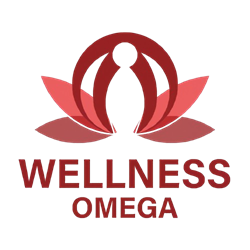HIIT, LISS, and More: Decoding Popular Workout Routines
Introduction
In today’s fast-paced world, fitness routines have evolved to meet diverse needs and preferences. Among the vast array of workout options, High-Intensity Interval Training (HIIT) and Low-Intensity Steady State (LISS) stand out as two of the most popular. In this article, we’ll decode these workout routines, explore their benefits and distinctions, and help you determine which one might be best for your lifestyle.
What is HIIT?
High-Intensity Interval Training (HIIT) is characterized by short bursts of intense exercise followed by brief recovery periods. This type of workout maximizes efficiency, burns calories at a heightened rate, and can be completed in a shorter time frame compared to traditional cardio methods.
Benefits of HIIT
- Time-efficient: HIIT workouts can typically be completed in 20-30 minutes.
- Boosts metabolism: The afterburn effect (EPOC) keeps the body burning calories long after the workout.
- Improves cardiovascular health: Regular HIIT can enhance heart health and endurance.
- Can be done anywhere: No equipment is necessary; bodyweight exercises are effective.
What is LISS?
Low-Intensity Steady State (LISS) entails engaging in cardiovascular exercise at a consistent, moderate pace for an extended period. Activities such as walking, jogging, swimming, or cycling at a low intensity define this approach.
Benefits of LISS
- Ideal for beginners: LISS is approachable for individuals new to fitness or returning after a break.
- Enhances recovery: LISS can aid in muscle recovery between more intense workouts.
- Burns fat: Steady-state exercise primarily targets fat as fuel, beneficial for weight management.
- Lower injury risk: The low intensity reduces the likelihood of injury.
Comparing HIIT vs LISS
Both HIIT and LISS have unique benefits, so your choice may depend on personal goals, fitness level, and preferences. Here’s how they stack up against each other:
| Feature | HIIT | LISS |
|---|---|---|
| Intensity | High | Low |
| Duration | Short (20-30 mins) | Long (30+ mins) |
| Calories Burned | High in short time | Moderate over longer time |
| Ideal for | Advanced fitness enthusiasts | Beginners, recovery phases |
Other Popular Workout Routines
While HIIT and LISS are frontrunners, many other workout routines have garnered popularity:
Strength Training
This involves lifting weights or using resistance to build muscle mass. It’s effective for toning and maintaining a strong metabolism.
Circuit Training
A mix of strength and cardiovascular exercises performed in sequence with minimal rest, circuit training can resemble HIIT in intensity.
Pilates and Yoga
Focused on flexibility, core strength, and mindfulness, these routines contribute to overall health and well-being.
CrossFit
Combining elements of HIIT, strength training, and functional movements, CrossFit challenges fitness enthusiasts to achieve diverse physical goals.
How to Choose the Right Workout
Choosing the right workout routine depends on several factors, including personal goals, time constraints, and fitness level. Here are some tips:
- Identify your goals: Are you looking to lose weight, gain muscle, or enhance cardiovascular health?
- Consider your schedule: How much time can you dedicate to exercise each week?
- Assess your fitness level: Be realistic about your current capabilities to avoid injury.
- Mix it up: Combining different workout styles can prevent boredom and enhance overall fitness.
Conclusion
In summary, both HIIT and LISS offer valuable benefits and can be integrated into a balanced workout regimen. HIIT is ideal for those seeking efficiency and intensity, while LISS serves as a great introduction to fitness or a gentler active recovery option. Ultimately, the best workout is one that aligns with your goals and can be sustained over time. Remember to consult a fitness professional if you are unsure where to start!
FAQs
1. Can I mix HIIT and LISS in my workout routine?
Absolutely! Many fitness enthusiasts find that combining both methods offers a well-rounded approach to fitness, allowing for both intensity and recovery.
2. How often should I do HIIT?
It’s recommended to include HIIT workouts 2 to 3 times a week, depending on your fitness level. Allow adequate recovery time between sessions.
3. Is LISS suitable for weight loss?
Yes, LISS is an effective way to burn calories and promote fat loss, especially when paired with a balanced diet.
4. Do I need equipment for HIIT?
No equipment is necessary for HIIT. Bodyweight exercises are just as effective. However, you can use weights or resistance bands for added intensity.
5. How do I get started with working out?
Start slow. Choose a type of workout that interests you, set realistic goals, and be consistent. It’s best to consult with a fitness professional if you’re unsure about your approach.

